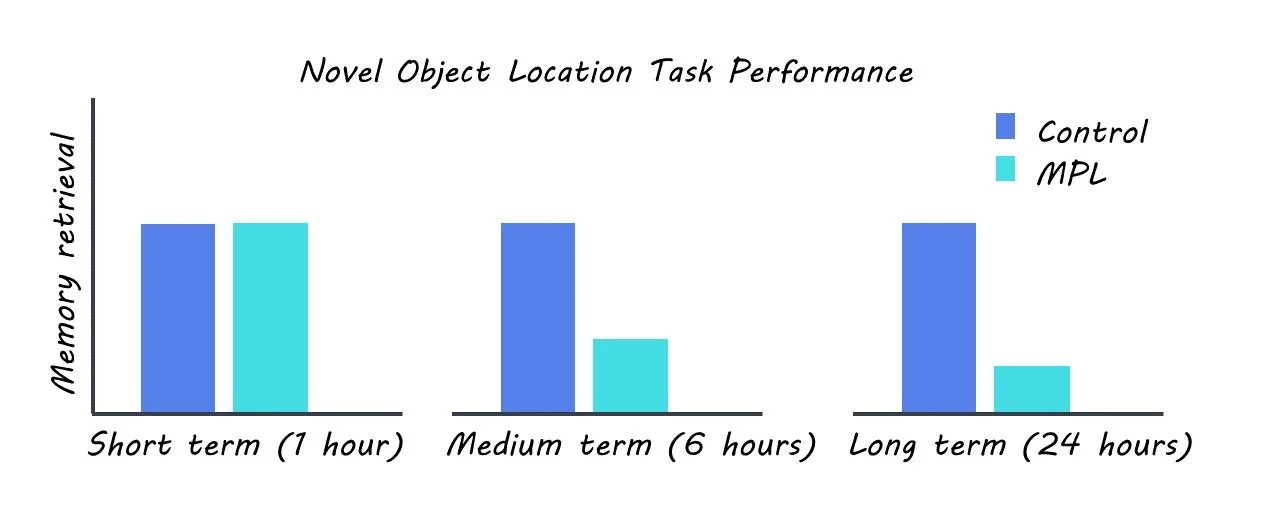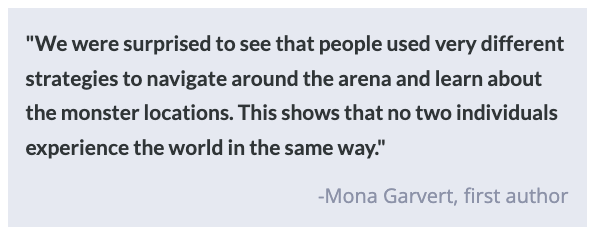Prefrontal Neurons Regulate the Relationship Between Fear Memory and Pain Perception
Post by Leanna Kalinowski
The takeaway
A small subset of neurons in the prefrontal cortex regulates the association between long-term fear memory and pain perception. Fear memories in these neurons can then be blocked to alleviate chronic hypersensitivity to pain.
What's the science?
Pain and fear are two independent processes that are interrelated in some contexts. For example, when we are faced with a dangerous situation, our fear suppresses our perception of pain; this is a survival mechanism that is well understood. However, long-term fear memories caused by previous exposure to pain can also increase our future sensitivity to pain. This week in Nature Neuroscience, Stegemann and colleagues studied the association between long-term fear memory and pain perception by tagging and manipulating engrams, which are physical traces of memory in the brain.
How did they do it?
In the first experiment, the researchers aimed to identify the engram in the prefrontal cortex that is responsible for recalling previously encoded fear memories. To do this, they first injected a virus into the brain of mice that tags activated cells with mCherry (a fluorescent marker that can be viewed under a microscope). Then, mice received one of three pain stimuli: (1) foot shock, where they received occasional foot shocks over a five-minute period, (2) capsaicin injection, which is a substance that causes acute pain, or (3) fear conditioning, where they are first taught to associate a chamber and tone with a foot shock (training phase), and then are placed into the same chamber four weeks later where they are played the same tone but do not receive foot shocks (recall phase). Importantly, the researchers mixed doxycycline into the mice’s drinking water during the training phase of fear conditioning, as doxycycline temporarily deactivates the virus that tags activated cells with mCherry. This allowed them to only tag the cells being activated during the recall phase.
In the second experiment, the researchers aimed to assess the effects of optogenetically manipulating this engram on fear- and pain-related behaviors. To do this, two groups of mice received a prefrontal cortex injection of either (1) a virus that expresses archeorhodopsin (ArchT), which is a protein that turns off cell activity when exposed to a surgically-implanted fluorescent light, or (2) a virus that expresses channelrhodopsin-yellow fluorescent protein (ChR2-YFP), which is a protein that turns on cell activity when exposed to a fluorescent light. Both sets of mice then underwent the fear conditioning procedure with two rounds of fear recall: once without fluorescent light exposure, and once with fluorescent light exposure. In a different session, the researchers also measured pain behaviors after injecting both groups of mice with capsaicin and delivering the fluorescent light exposure.
In the third experiment, the researchers aimed to assess how the interaction between fear and pain differs in mice experiencing chronic pain. They first measured baseline pain behaviors in mice by measuring how quickly they withdrew their paw from a heat source or from mechanical stimulation. Next, the mice underwent fear conditioning and once again underwent pain behavior testing. Then, mice received one of the following chronic pain manipulations: spared nerve injury or paw inflammation. Finally, the mice underwent a third and final round of pain behavior testing.
In the final experiment, the researchers aimed to assess whether pain hypersensitivity in chronic pain mice can be reversed by silencing the fear memory engram with optogenetics. First, they again injected mice with a virus that expresses ArchT. The mice then underwent fear conditioning with two rounds of fear recall: one without fluorescent light exposure (i.e., cells are kept on), and one with ArchT activation (i.e., cells are turned off). Then, mice received one of the two chronic pain manipulations -- spared nerve injury or paw inflammation -- with pain behaviors being measured both at the peak of pain hypersensitivity and following several weeks of chronic pain hypersensitivity.
What did they find?
First, the researchers were able to identify an engram in the prefrontal cortex that was activated during both long-term fear memory and short-term pain. Results from this experiment informed their experimental manipulations for the remainder of the paper. Then, the researchers first found that optogenetic ArchT activation (i.e., turning off the cells) of the engram reduced both fear memory in the fear recall test, and pain-related behaviors (e.g., flicking, licking, or lifting the injected paw) following the capsaicin injection. They also found that optogenetic ChR2-YFP activation (i.e., turning on the cells) of the engram induced fear memory recall behaviors (e.g., freezing behaviors) even in the absence of auditory and contextual cues. This suggests that acute pain perception contains traces of a long-term fear memory from a previous pain experience.
Next, the researchers found that while pain behaviors (i.e., rapid paw withdrawal) were not affected by prior fear conditioning in mice without chronic pain, mice with both types of chronic pain had greater pain sensitivity as evidenced by shorter paw withdrawal times. Chronic pain mice exposed to fear conditioning had a further increase in connectivity intensity to the mediodorsal thalamus, which is important for regulating emotion and the negative affect of pain.
Finally, the researchers found that, in mice whose long-term fear memory engrams were silenced, pain behaviors were reduced at both time points in both models of chronic pain. This shows that chronic hypersensitivity to pain can be reversed after suppressing the recall of long-term fear memory.
What’s the impact?
Taken together, results from this study show that a small subset of prefrontal cortex neurons is responsible for mediating interactions between long-term fear memories and pain perception, and they can be manipulated to alleviate pain hypersensitivity following chronic pain. These findings open the door to potential therapeutic strategies for chronic pain patients who experience fear-induced pain hypersensitivity.





